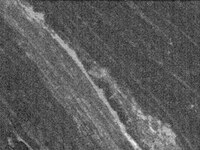NE1013 Sigma-AldrichAnti-PGP9.5 (176-191) Rabbit pAb
This Anti-PGP9.5 (176-191) Rabbit pAb is validated for use in Immunoblotting, Frozen Sections for the detection of PGP9.5 (176-191).
More>> This Anti-PGP9.5 (176-191) Rabbit pAb is validated for use in Immunoblotting, Frozen Sections for the detection of PGP9.5 (176-191). Less<<Anti-PGP9.5 (176-191) Rabbit pAb MSDS (material safety data sheet) or SDS, CoA and CoQ, dossiers, brochures and other available documents.
同义词: Anti-Neuron Cytoplasmic Protein 9.5, Anti-Ubiquitin Thiolesterase L1, Anti-UCHL1
Recommended Products
概述
| Replacement Information |
|---|
重要规格表
| Species Reactivity | Host | Antibody Type |
|---|---|---|
| H, M, Porcine, R | Rb | Polyclonal Antibody |
价格及供货情况
| 产品目录编号 | 库存情况 | 包装 | 数量 / 包装 | 价格 | 数量 | |
|---|---|---|---|---|---|---|
| NE1013-50ULCN |
|
塑胶安瓿;塑胶针药瓶 | 50 ul |
|
— |
| References | |
|---|---|
| References | Caballero, O.L., et al. 2002. Oncogene 21, 3003. Tezel, E., et al. 2000. Clin. Cancer Res. 6, 4764. |
| Product Information | |
|---|---|
| Form | Liquid |
| Formulation | Undiluted serum. |
| Positive control | Mouse dorsal root nerve fibers |
| Preservative | ≤0.1% sodium azide |
| Quality Level | MQ100 |
| Physicochemical Information |
|---|
| Dimensions |
|---|
| Materials Information |
|---|
| Toxicological Information |
|---|
| Safety Information according to GHS |
|---|
| Safety Information |
|---|
| Product Usage Statements |
|---|
| Packaging Information |
|---|
| Transport Information |
|---|
| Supplemental Information |
|---|
| Specifications |
|---|
| Global Trade Item Number | |
|---|---|
| 产品目录编号 | GTIN |
| NE1013-50ULCN | 04055977209846 |
Documentation
Anti-PGP9.5 (176-191) Rabbit pAb MSDS
| 职位 |
|---|
Anti-PGP9.5 (176-191) Rabbit pAb 分析证书
| 标题 | 批号 |
|---|---|
| NE1013 |
参考
| 参考信息概述 |
|---|
| Caballero, O.L., et al. 2002. Oncogene 21, 3003. Tezel, E., et al. 2000. Clin. Cancer Res. 6, 4764. |








